SENSATIONAL SCIENCE!
How do your eardrums work? Can odor molecules pass through a solid the same way they pass through air? How does your sense of smell affect how something tastes? Use the scientific method to answer these questions and more with the fun life science experiments in this book. Many experiments include ideas for a science fair project.
About the Authors
ROBERT GARDNER is a retired high school teacher of physics, chemistry, and physical science. THOMAS R. RYBOLT has taught chemistry at the University of Tennessee at Chattanooga for more than twenty-five years. Both authors enjoyed writing these experiments with their daughters: authors LEAH M. RYBOLT and BARBARA GARDNER CONKLIN.

When you hear the word science, do you think of a person in a white lab coat surrounded by beakers of bubbling liquids, specialized lab equipment, and computers? What exactly is science? Maybe you think science is only a subject you learn in school. Science is much more than this.
Science studies the things that are all around you, every day. No matter where you are or what you are doing, scientific principles are at work. You dont need special materials or equipment, or even a white lab coat, to be a scientist. Materials commonly found in your home, at school, or at a local store will allow you to become a scientist and pursue an area of interest. By making careful observations and asking questions about how things work, you can begin to design experiments to investigate a variety of questions. You can do science. You probably already have but just didnt know it!
Perhaps you are reading this book because you are looking for an idea for a science fair project for school, or maybe you are just hoping to find something fun to do on a rainy day. This book will provide an opportunity for you to learn about your senses and carry out experiments involving vision, hearing, taste, smell, and touch. Sensory organs include the eye, the ear, the tongue, the nose, and receptors in the skin. These gather information from your environment and send it to your brain where it is processed. It is a complex process to understand. It involves not only biology, but chemistry and physics too. Undoubtedly you will discover how much fun it is to experiment with the senses.
All scientists look at the world and try to understand how things work. They make careful observations and conduct research about a question. Different areas of science use different approaches. Depending on the phenomenon being investigated, one method is likely to be more appropriate than another. Designing a new medication for heart disease, studying the spread of an invasive plant species such as purple loosestrife, and finding evidence about whether there was once water on Mars all require different methods.
Despite the differences, however, all scientists use a similar general approach to do experiments. It is called the scientific method. In most experiments, some or all of the following steps are used: making an observation, formulating a question, making a hypothesis (an answer to the question) and prediction (an if-then statement), designing and conducting an experiment, analyzing results and drawing conclusions, and accepting or rejecting the hypothesis. Scientists then share their findings with others by writing articles that are published in journals. Afterand only aftera hypothesis has repeatedly been supported by experiments can it be considered a theory.
You might be wondering how to get an experiment started. When you observe something in the world, you may become curious and think of a question. Your question can be answered by a well-designed investigation. Your question may also arise from an earlier experiment or from background reading. Once you have a question, you should make a hypothesis. Your hypothesis is a possible answer to the question (what you think will happen). Once you have a hypothesis, it is time to design an experiment.
In some cases, it is appropriate to do a controlled experiment. This means there are two groups treated exactly the same except for the single factor that you are testing. That factor is often called a variable. For example, if you want to investigate whether the sense of smell influences taste, two groups may be used. One group is called the control group, and the other is called the experimental group. Tasting foods with the nose plugged will form the control group, while tasting without plugging the nose will be the experimental group. The variable is the plugged or unplugged noseit is the thing that changes, and it is the only difference between the two groups. The two groups should be treated exactly the same: The subjects should taste the same types of food, and it should be cut into chunks of the same size and shape. The nose should be plugged in the same way, and the subjects should chew the chunks in the same way.
During the experiment, you will collect data. For example, you might determine how many of the foods are tasted and identified accurately. By comparing the data collected from the control group with the data collected from the experimental group, you will draw conclusions. Since the two groups were treated exactly alike, you could conclude with confidence that any difference between the groups is a result of the one thing that was different: an unplugged nose.
Two other terms that are often used in scientific experiments are dependent and independent variables. The dependent variable here is the ability to taste, because it depends upon the sense of smell. Sense of smell is the independent variable (it doesnt depend on anything). After the data is collected, it is analyzed to see whether the hypothesis was true or false. Often, the results of one experiment will lead you to a related question, or they may send you off in a different direction. Whatever the results, there is something to be learned from all scientific experiments.
Many of the experiments in this book may be appropriate for science fair projects. Experiments marked with an asterisk ( ) include a section called Science Fair Project Ideas. The ideas in this section will provide suggestions to help you develop your own original science fair project. However, judges at such fairs do not reward projects or experiments that are simply copied from a book. For example, a model of an ear or an eye, which is commonly found at these fairs, would probably not impress judges unless it was done in a novel or creative way. On the other hand, a carefully performed experiment to find out how smell affects taste would be likely to receive careful consideration.
) include a section called Science Fair Project Ideas. The ideas in this section will provide suggestions to help you develop your own original science fair project. However, judges at such fairs do not reward projects or experiments that are simply copied from a book. For example, a model of an ear or an eye, which is commonly found at these fairs, would probably not impress judges unless it was done in a novel or creative way. On the other hand, a carefully performed experiment to find out how smell affects taste would be likely to receive careful consideration.
Science fair judges tend to reward creative thought and imagination. However, its difficult to be creative or imaginative unless you are really interested in your project. If you decide to do a project, be sure to choose a topic that appeals to you. Consider, too, your own ability and the cost of materials. Dont pursue a project that you cant afford.
If you decide to use a project found in this book for a science fair, you will need to find ways to modify or extend it. This should not be difficult because you will probably find that as you do these projects new ideas for experiments will come to mind. These new experiments could make excellent science fair projects, particularly because they spring from your own mind and are interesting to you.
If you decide to enter a science fair and have never done so before, you should read some of the books listed in the Further Reading section. The books that deal specifically with science fairs will provide plenty of helpful hints and lots of useful information that will enable you to avoid the pitfalls that sometimes plague first-time entrants. You will learn how to prepare appealing reports that include charts and graphs, how to set up and display your work, how to present your project, and how to relate to judges and visitors.

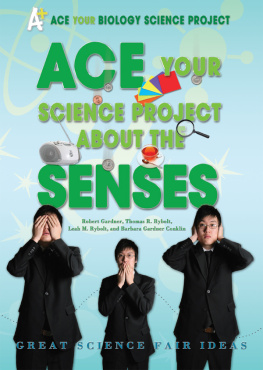

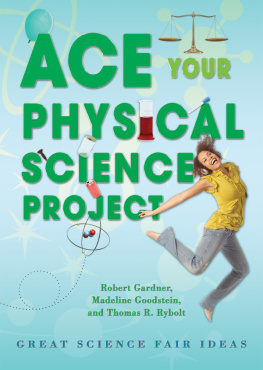

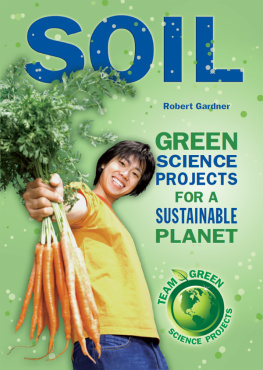
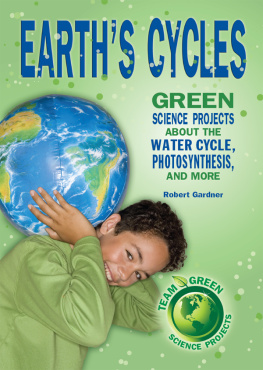
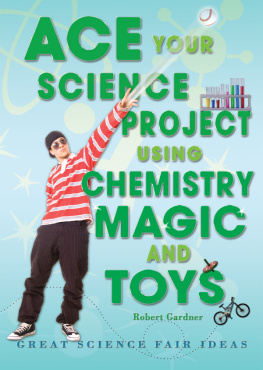
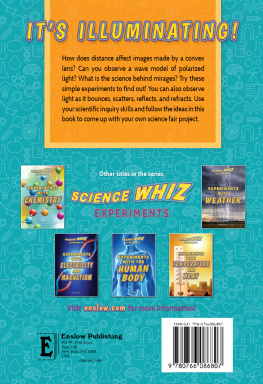
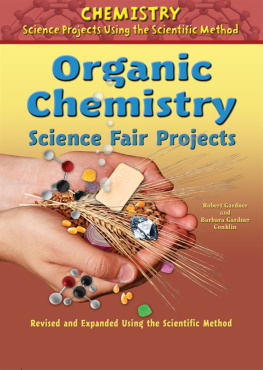

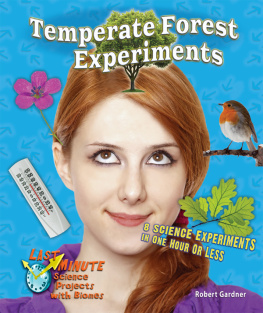

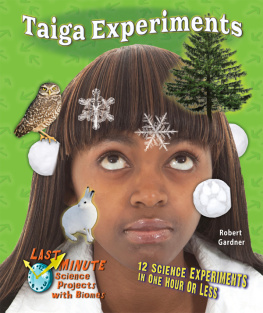
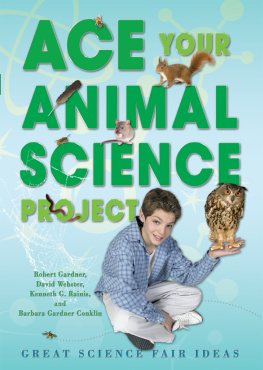
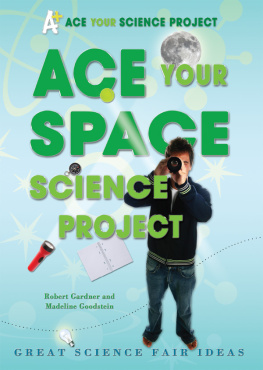





 ) include a section called Science Fair Project Ideas. The ideas in this section will provide suggestions to help you develop your own original science fair project. However, judges at such fairs do not reward projects or experiments that are simply copied from a book. For example, a model of an ear or an eye, which is commonly found at these fairs, would probably not impress judges unless it was done in a novel or creative way. On the other hand, a carefully performed experiment to find out how smell affects taste would be likely to receive careful consideration.
) include a section called Science Fair Project Ideas. The ideas in this section will provide suggestions to help you develop your own original science fair project. However, judges at such fairs do not reward projects or experiments that are simply copied from a book. For example, a model of an ear or an eye, which is commonly found at these fairs, would probably not impress judges unless it was done in a novel or creative way. On the other hand, a carefully performed experiment to find out how smell affects taste would be likely to receive careful consideration.